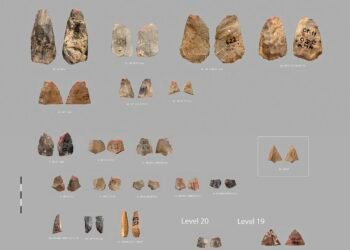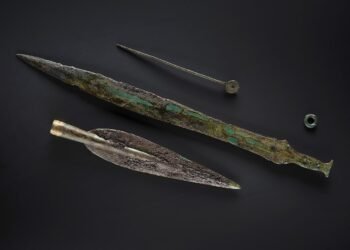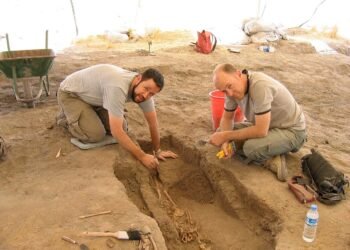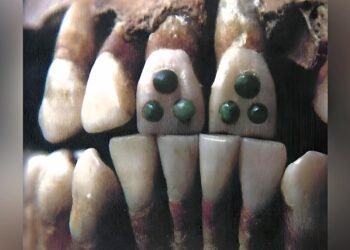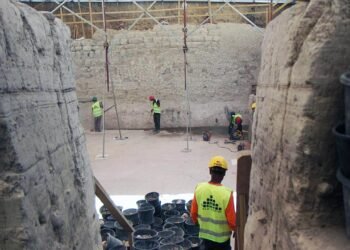Archaeologists have uncovered two medieval burials from the 11th and 12th centuries at the Gnezdilovo burial ground near Suzdal in Vladimir Oblast, Russia.

The Gnezdilovo cemetery, initially discovered in 1851, has long been a site of archaeological interest. The excavation, led by researchers from the Institute of Archaeology of the Russian Academy of Sciences in collaboration with the State Historical Museum, revealed approximately 50 undisturbed burials.
Among these, two graves—designated as No. 59 and No. 49—have drawn particular attention due to the unique items found within them, suggesting the deceased were individuals of high status, possibly tax collectors.
Grave No. 59 contained the remains of a man estimated to have been between 35 and 40 years old at the time of his death. He was buried with several artifacts, including a bronze belt buckle shaped like a lyre, a knife, a broken ceramic vessel, and a battle ax. This type of battle ax, characterized by a semicircular notch at its base and a small hammer on one end, was commonly used in the 11th and 12th centuries across Eastern Europe and was particularly associated with the nomadic cultures of the steppes. The presence of such an ax in this burial suggests the man may have held a position of power or prestige.

Next to him, in grave No. 49, another man was buried, aged between 25 and 30 years. His burial was marked by a complex wooden structure that was notably constructed without the use of iron nails—a technique that highlights the craftsmanship of the period.
The grave also contained equestrian equipment, including stirrups and a buckle used to tighten a saddle, along with a similar battle ax to the one found in grave No. 59. These findings, particularly the combination of weapons and horseman’s gear, suggest that this man also held a significant status, likely tied to military or administrative roles.
Researchers have proposed that these men may have been tax collectors, as indicated by the discovery of weights likely used to measure coins collected as taxes.
According to a statement from the Institute of Archaeology, “Joint finds of weapons, scales, and weights in men’s burials are convincingly interpreted as an indication of the ownership of these burials to persons who performed fiscal functions.” This connection to fiscal responsibilities is further supported by the rarity of such burials in ancient Russian sites, which typically do not include weapons due to the Slavic pagan traditions that dominated the region before its Christianization.
The discoveries at Gnezdilovo are particularly significant because they provide a glimpse into the rapid Christianization of the Old Russian elite during the 11th century. As noted by the archaeologists, the presence of high-status items, including equestrian equipment and battle axes, in these burials reveals much about the culture and social structure of the time.
The cemetery, with its array of artifacts and the largest collection of medieval battle axes found in North-Eastern Rus’ to date, stands out as a special site.



